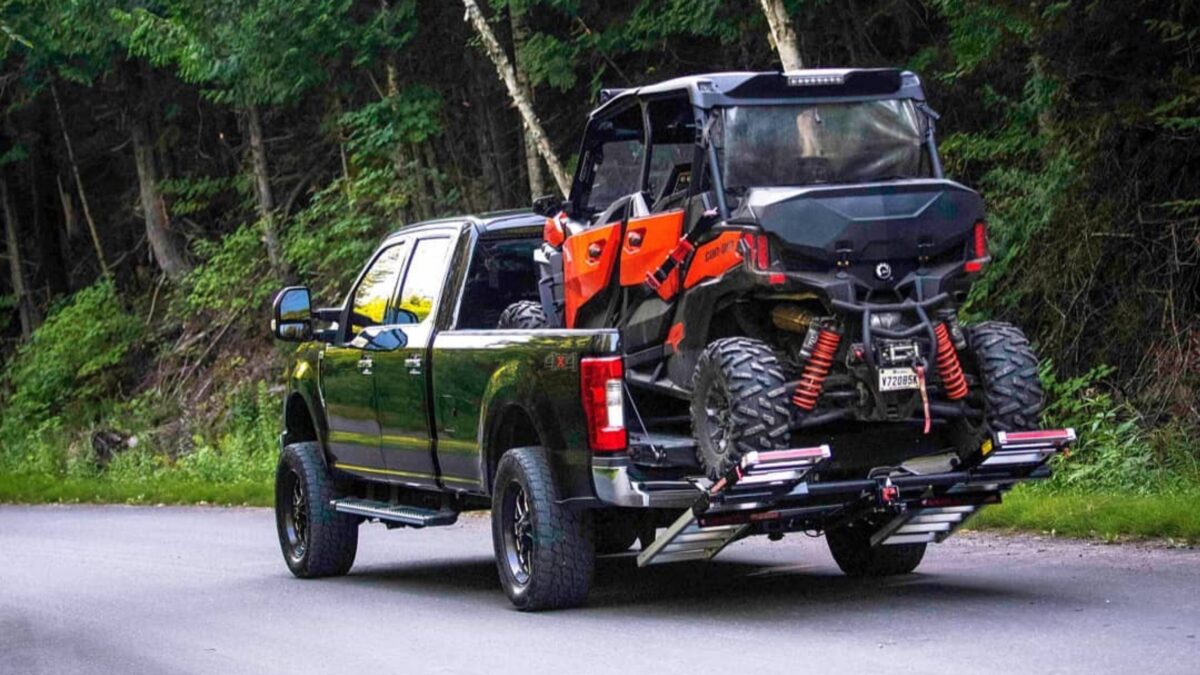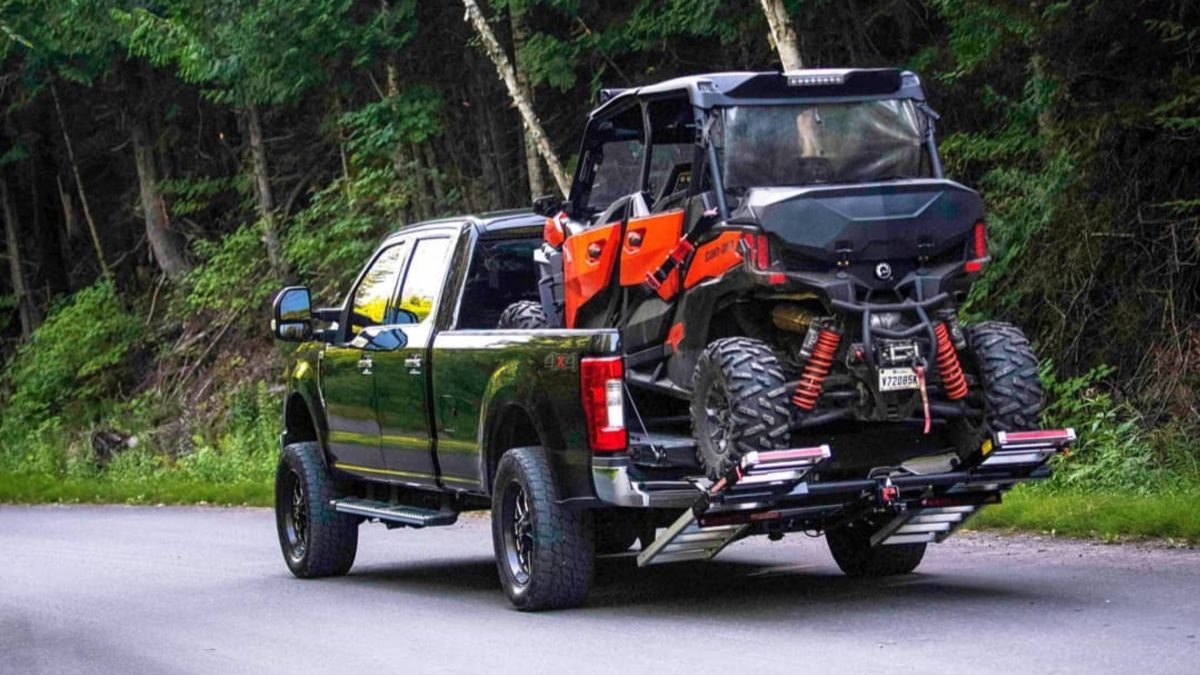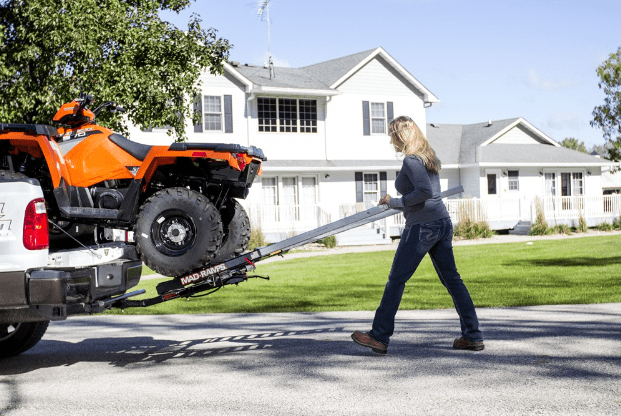When it’s time to take your off-road vehicle on the next adventure, how do you transport your ATV/UTV? You used to have two options: traditional ramps or a trailer. MAD-RAMPS has revolutionized the ATV transport market by providing you an easier, more efficient, and safer option to get your ATV and gear from point A to point B.
Transporting with Traditional Ramps
- Place your ramps so the tires are as close to the center as possible.
- Put your ATV into the lowest possible forward gear so the ATV will move with the least amount of throttle. If you have it, use your 4-wheel drive so your wheels better grip the ramps.
- Now begin to apply just enough throttle so the ATV starts to climb the ramp. Avoid rapid throttle input as this may cause the wheels to spin.
- When you’ve crested the ramp, carefully apply the brakes to fully stop the ATV. Put into park and stop the engine.
- Now you’re ready to securely tie down the ATV and return the ramps to their storage location.
Cons of Traditional Ramps
- Ramp movement and instability
- Must manually handle and stow ramps
- Entire truck bed is required for use
Transporting with a Trailer
- Check the level tongue height on your trailer. During this step the trailer needs to be unhooked from the truck and parked on flat ground. When the tongue height is level, measure the tongue distance off the ground.
- It’s unlikely that the tow vehicle hitch height will be the same as the level tongue height. If this is the case, you’ll need the help of a drawbar with an offset to make up for the distance.
- Make sure all your chains, brakes, and lights are fully functional. When hooking up your chains, cross them in an X underneath the hitch. Plug in trailer lights and brakes. Also be sure the trailer battery is charged from the tow vehicle.
- Be absolute sure you have locked down the catch and inserted the safety pin.
- Carefully drive the ATV into the trailer and tie it down securely. The load must be properly balanced. The ideal weight bias is about 10-15% of the trailer’s load on the hitch.
Cons of Trailers
- Requires additional license, registration, and insurance
- Ongoing maintenance and repair costs
- Parking and storage
- Terrain limitations
Transporting an ATV with MAD-RAMPS
- Connect the MAD-RAMPS to your trucks receiver hitch in seconds.
- Carefully drive your ATV onto the ramp.
Pros of MAD-RAMPS
- Loads, unloads, and transports ATV/UTVs up to 1,400 pounds
- DOT approved in all 50 states
- Adjustable ground-clearance settings
- More room for cargo in the truck bed
- No terrain limitations
- Easily stored when not in use
- No maintenance
- No more hassle from wobbly traditional ramps or bulky trailers



